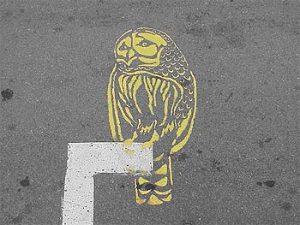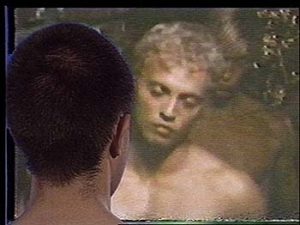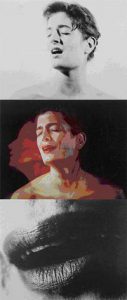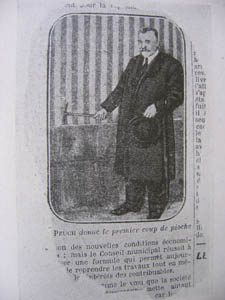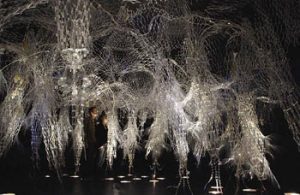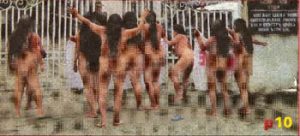Marshall Plan Modernism

Focusing on artwork by Lucio Fontana, Alberto Burri, and Piero Manzoni, Jaleh Mansoor demonstrates and reveals how abstract painting, especially the monochrome, broke with fascist-associated futurism and functioned as an index of social transition in postwar Italy. Mansoor refuses to read the singularly striking formal and procedural violence of Fontana’s slit canvasses, Burri’s burnt and exploded plastics, and Manzoni’s “achromes” as metaphors of traumatic memories of World War II. Rather, she locates the motivation for this violence in the history of the medium of painting and in the economic history of postwar Italy. Reconfiguring the relationship between politics and aesthetics, Mansoor illuminates how the monochrome’s reemergence reflected Fontana, Burri, and Manzoni’s aesthetic and political critique of the Marshall Plan’s economic warfare and growing American hegemony. It also anticipated the struggles in Italy’s factories, classrooms, and streets that gave rise to Autonomia in the 1960s. Marshall Plan Modernism refigures our understanding of modernist painting as a project about labor and the geopolitics of postwar reconstruction during the Italian Miracle.
For more information: https://www.dukeupress.edu/marshall-plan-modernism
WRECK – Volume 2, Issue 1
“(Re)presenting Power”
State, economic, and bureaucratic power possess a capillary quality, working their way into the bodies, attitudes, and everyday actions of people. However, power would be ephemeral if flowing only from the top down — as a means to suppress, coerce, or censor. Not restricting knowledge, power produces it. It remains potent owing to its immanence, diffused throughout society, on all levels: at once the means of attack and counterattack, oppression and subversion, didacticism and satire.
At a time when strategies of manipulation are becoming ever more sophisticated, the study of power and the strategies behind the manipulation of images, objects, sounds, and space has become one of the major thrusts of scholarship in Art History, Visual Culture, and Cultural Studies. In this issue, we have taken the theme “(Re)presenting Power” to address the continuing interest in examining power and the forms and strategies with which all manner of media are employed to such ends. With the topic open to all historical periods and cultures, the emphasis is on how representations of power work to maintain, (re)produce, capture, or disrupt power.
Editorial Board
Geoffrey Carr, Jeffrey DeCloedt, Jenni Pace, Michael Windover
Acknowledgments
The Editors would like to acknowledge the generous support of the faculty and staff of the Department of Art History, Visual Art & Theory. We would like to thank Whitney Friesen and especially Prof. Rhodri Windsor-Liscombe for their assistance and guidance. We wish also to extend warmest thanks to Rob Bos, who freely provided his expertise in website construction and design. Finally, we would like to thank the contributors who worked with us over the past several months, as we prepared the first online issue of Wreck.
Foreword


View of replica tapestry of Pablo Picasso’s Guernica, outside the Security Council chamber, UN Headquarters, New York. UN Photo by Eskinder Debebe.
Five years ago, as US forces poised to invade Iraq, the reproduction of Pablo Picasso’s Guernica hanging outside the United Nations Security Council Chamber was covered in anticipation of Secretary Of State Colin Powell’s speech to that body. UN officials explained that the blue curtain would photograph better than the taupe and brown-hued tapestry. But generally it was clear that figures of shrieking animals and anguished civilians did not provide a suitable backdrop for Powell’s call to arms. The supreme irony of this ‘cover up’ was not lost on antiwar protesters, who gathered outside the UN holding aloft small copies of Guernica. Peter Goddard, art critic for the Toronto Star, concluded that “if there is a war with Iraq, there’s already been the first casualty – art.”
Rules of the Road: News Media, Street Art, and Crime
In 2004, the street artist known as Roadsworth (Peter Gibson) was arrested for illegally spray-painting over one hundred brightly coloured stenciled images on roads and sidewalks in Montreal during the previous three years. Objecting to the severe punishment potentially facing the artist, local journalists rallied swiftly to Gibson’s defense. The body of news publications on the Roadsworth case is notable for publicly documenting ephemeral street art works, articulating a critical reception of criminalized art, and instigating debates on the uses of urban space. By analyzing two forms of news reporting on the Roadsworth affair – interviews and art critics’ columns – this paper argues that such writings developed diverse, often conflicting, perspectives toward street art while countering institutionally sanctioned uses and conceptions of public space. Of particular significance to this analysis are the news media’s preoccupation with knowledge of the city, the tensions between art and vandalism, and competing images of the contemporary metropolis.
Freedom, Sex & Power: Film/Video Regulation in Ontario
by Taryn Sirove
Taryn Sirove maps numerous interventions and contests by artists and filmmakers since the 1980s over the regulation of video and film in Ontario by the Ontario Film Review Board. She examines the ways in which legal and street-level debates have defined and redefined words like sex, sexuality, explicit, obscenity, degrading, and harm. Moreover, the contradictory and problematic license of officially-recognized “art” to skirt decency laws is explicated. In addition to provincial legal contests, Sirove also considers changing definitions of pornography in the criminal code of Canada that provide the discursive logic informing its censorship at the provincial level. She argues that censorship constitutes a requisite “technology of power” and, further, that its agonistic terrain can constitute meaningful social change.
Une voix tranquille: Listening to the Works of Geneviève Cadieux
Much of what has been written about the art of Geneviève Cadieux focuses on visuality, as photography is her principal medium. However, two of her photo works specifically implicate sound and take on additional significance in their time and site specificity of Montreal. Even though Hear Me With Your Eyes (1989) and La voie lactée (1992) do not contain an audio component, intertextual references to literature and film in the work reveal important issues with regard to language rights and politics in Canada. The works also contain subtle metaphors that demonstrate how the Roman Catholic Church’s deep- rooted influence continues to have its effect on Québecois identity, society, and culture, even in the wake of the “Quiet Revolution.” Consideration of audibility also assists in exploring ways in which Cadieux’s work reflects the issues informing the separatist movement in Quebec during the 1990s and remains highly relevant in the context of the Parti Québecois’ recent proposition of Bill 195.
Reviews
The Optic of the State: Visuality and Power in Argentina and Brazil. Pittsburgh: University of Pittsburgh Press, 2007. xv + 256 pp. Jens Andermann
WRECK – Volume 2, Issue 2




Proceedings from Obsolete Concepts: Formative Lingerings, March 28-29, 2008
Foreword
Beauty, Truth, Objectivity, Formalism, Avant-garde. Each of these words represents a concept that at one moment or another carried the weight necessary to form a historian’s vision. As students of Art History – as future Art Historians – we found it prudent to question the notion of the obsolete concept and the role that it can play in the writing and the formation of Art History. Thus, over a period of two days in March 2008, we held a symposium meant to encourage such a questioning. The papers that follow are the product of this symposium. As way of introduction, we would like to offer the symposium’s point of departure: the Call for Papers.
Obsolete Concepts: Formative Lingerings
How and why do ideas become obsolete? Are they abandoned as they lose their vitality and social relevance? Are they dropped when they fail to represent the contemporary cultural context? Or when the problems they propose have been successfully resolved? Do ideas just become boring? Are concepts that have been rejected as obsolete forever doomed to describe only the old ways? Or can they later reemerge as politically dangerous positions? Do obsolete concepts ever really go away? Obsolete Concepts: Formative Lingerings is a 2-day symposium held on 7-8 March 2008 and hosted by the graduate students of the Department of Art History, Visual Art and Theory at the University of British Columbia. The conference is aimed at bringing students from art history and the visual arts together with students in other humanities departments to foster cross-disciplinary discussion and debate. We invite papers that re-think outmoded ideas/concepts/positions/approaches – or those whose discarding we anticipate – in order to begin a discussion on why they become outmoded and how they continue to resonate through altered forms. Topics may address, but are not limited to, the following concepts:
The author, Aesthetics, Beauty, Avant-garde, Formalism, Socialism, Revisionism, Parody, God, History, Modernism, Postmodernism, Truth, Spirit, Feminism, Colonialism, Post-colonialism, Globalization, The spectacle, Painting, Simulation, Humanism, The museum, Suburbia, Realism, Objectivity, Collectivism, Structuralism, Utopia, Distopia, Academia…
Sara Mameni and Vanessa Sorenson, guest editors
Acknowledgments
As guest editors and organizers of the Symposium, we would like to acknowledge the ongoing support of the faculty and staff of the Department of Art History, Visual Art & Theory. Our thanks to Whitney Friesen for her patient guidance through both the planning of the Symposium and the publication of the proceedings, and to the volunteers without whom the Symposium could not have happened, particularly Carla Benzan, Ashley Belanger, Kim Tuttle, Naomi Sawada, and Michael Windover. A special note of thanks to Serge Guilbaut and Scott Watson who made it possible for Regis Michel, our keynote speaker, to be with us for two days. Thanks also to the Symposium speakers, the respondents, and all who joined in the conversation around obsolete concepts. Thanks to Rhodri Windsor-Liscombe and Katherine Hacker for their assistance in navigating the bureaucracy of the institution when we needed it most. Lastly, we are grateful to John O’Brian and William Wood for their help in the early stages of the symposium’s development.
Editorial Board
Geoffrey Carr and Michael Windover
At Converging Obsolescences: The Case for Exhibition-Performance in African Art-Music-Dance
by Joshua Cohen
Five obsolescences currently converge around traditional African art in the West: growing irrelevance of criticism, a perception of lapsed modernity, the white cube’s obscuration of history, no access to performance contexts, and waning government arts patronage. In response, a case is made for exhibition-performance: a two-space forum through which viewers first encounter traditional masks in the Western white cube, then take seats in a performance hall where, throughout the course of a multimedia production incorporating music, choreography, lighting, and projected images and text, professional African performers dance the exhibition’s masks.
‘What Manner of Salutation This Should Be’: The Disquieted Gaze in Fra Angelico’s San Marco Annunciation
In Fra Angelico’s Annunciation fresco in the North corridor of San Marco in Florence, the Virgin raises her eyes and gazes, warily, at the intruding angel who has interrupted her repose beside a garden. Fra Angelico’s unprecedented composition, centered on the Virgin’s raised eyes that meet the Angel Gabriel’s gaze, is the departure point for this paper, which locates the Virgin in a moment of tension where she “knows not what manner of salutation this should be.” Usually depicted as a yielding vessel with downcast eyes, here the Virgin is shown with a forthright gaze, a rare instance in Renaissance versions of the subject. Drawing on medieval theories of vision, Lacanian ideas of subject formation, and the Dominicans’ particularly embodied way of viewing, this paper positions the Virgin as an important model for Dominican novices’ religious development.
Paris, 1924: Aragon, Le Corbusier, and the Question of the Outmoded
In 1924, two key figures of the French avant-garde published separate and diametrically opposed critiques of the last phase of the 19th century process of Haussmannization that could still be seen ravaging large sections of the right bank of Paris. On the verge of the surrealist outbreak, Louis Aragon rejected the trend of urban renewal in his experimental novella, Le Paysan de Paris, championing instead the potential radicality of the category of the recently old or outmoded. Meanwhile, contemporaneously, the purist spokesman Le Corbusier lambasted the cancerous tissue of the Parisian démodée in his tract Urbanisme.
The Crossover of Site-Specificity and New Media Immersion: Interactivity, “Spatial Experience,” and Subjectivity in Olafur Eliasson’s Notion motion and Philip Beesley’s Hylozoic Soil
by Anja Bock
TBA
Going Nowhere Fast: Ken Lum, Four Boats Stranded, and the Aporia of ‘Public Art’
by Carla Benzan
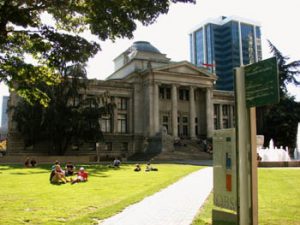

View of north façade of Vancouver Art Gallery.
Ken Lum, Four Boats Stranded: Red and Yellow, Black and White
Artist and critic Mark Lewis has stated that public art is “an imperative, a repeated and deliberate articulation”. To this assertion I would add that the term Public Art itself adjoins a further layer of legislation to an already overdetermined practice. The contradictions and tensions that are contained within the union of ‘public’ and ‘art’ are brought to the fore in a millennial public art project of the Vancouver Art Gallery entitled On Location: Public Art for the New Millennium and Ken Lum’s accepted proposal for that project Four Boats Stranded: Red and Yellow, Black and White. The work, as we will find, navigates the difficult terrain between collective consensus and individual imagination, between careful self-representation and direct opposition to dominant narratives, and between the voicing and silencing of contradictions within the genre of public art itself.
Naked Bodies as Site of Social Change
The question of agency is an integral component of contemporary Indian artist Nalini Malani’s art practice. One of the most well-known and respected contemporary artists from India, Malani has exhibited her paintings, drawings, video-installations, and theatrical productions in some of the most important national and international venues. She is part of the international circuit of artists from the so-called “Third World” whose works have consistently been included by international curators, biennales, and museums across the globe. In 2007 alone, Malani opened two major solo exhibitions in Dublin and Chicago respectively. Curator Robert Storr selected the artist’s work for the prestigious exhibition Think with the Senses Feel with the Mind at the 52nd Venice Biennale.
WRECK – Volume 3, Issue 1




Material Affinities: Intersections that Matter
Acknowledgements
As guest editors we wish to acknowledge the support of the many people who made this issue of WRECK possible. Firstly, the symposium itself would not have taken place without the financial and administrative support of the AHVA department at UBC including Whitney Friesen, Audrey Van Slyck and Dr. Rhodri Windsor-Liscombe. Our thanks also extend to Allison E. Collins, CCST student and current editor of WRECK, who offered support and edited the reviews for the issue, MA student Rebecca Lesser for sharing her invaluable skills as copy editor and designer Bill Matthews who generously produced the layout for the issue (billywilliam.net).
Above all, we thank the contributors for their efforts and their patience throughout the publishing process, and for sharing their work in this forum. The involvement of media artist and recent MFA graduate Josh Hite deserves special recognition. In response to the theme of the symposium, Josh generously shared a series of photographs, one of which was featured in our promotional materials, and a selection of which can be seen in the introduction.
Finally, we offer particular thanks to Dr. Jennifer Marshall (University of Minnesota), one of our keynote speakers, for composing the short essay included in this issue. The essay addresses the theme of the conference in relation to the debates and discussion prompted by her original keynote presentation. We are honoured that she would take the time to compose this piece and her willingness to participate speaks to her scholarly generosity. It speaks to the potential of scholarly events to foster critical dialogue that extends beyond the temporal and physical limits of the event itself.
Carla Benzan, Aldona Dziedziejko and Angela Zhang, guest editors
Introduction: Material Affinities
by Carla Benzan
Revisiting Materiality’s Material Conditions
In this short essay, keynote Dr. Jennifer Marshall reconsiders the notion of “semiotic thingness” that was introduced during her keynote presentation. Dr. Marshall addresses the debate prompted by her understanding of materiality in modernity, specifically in relation to theoretical notions of materiality as a “productive and palpable excess to the social, arbitrary, and deeply ideological world of signs.”
The Body as an Everyday Material in the 1960s: Yvonne Rainer and Steve Paxton
What sort of material was the body when it appeared so insistently in the work of art in the early 1960s? More than just a shocking novelty, the body provided an answer to questions about the status of materials and materiality in art, questions that were driving the increasingly widespread consensus among contemporary artists circa 1960 that “painting was dead.” This paper looks at Yvonne Rainer, Steve Paxton, and Robert Morris, three artists who worked in the same community in New York, whose questions about the nature of the work of art led them to live performance. Why did this move seem logical to them, and what sort of bodily modes did each put forward in his or her works? Morris and Rainer both received positive critical responses — though for distinctly different reason — while Paxton was almost unanimously viewed as an enigma. Why was this? This paper explores their different approaches, particularly the ways that each of their practices was informed by a notion of “the everyday,” a concept that perhaps unifies 1960s art practice more than any other. The paper will finally be most interested in Rainer’s exploration of the bodily everyday for the ways it led her to a form of bodily presentation that emphasized the body’s materiality, thus allowing the work of art to hold on to the contingent material effects that had in the past animated painting, while freeing it of a version of the human that emphasized its agency, dominance, and personality. In dialogue with Paxton and Morris, Rainer’s work makes a case for passivity that proved to be deeply necessary and useful for art practice in the decade that followed.
The Materiality of Cognition: Concrete Poetry and the Embodied Mind
by Mike Borkent
This paper examines the connection between visual and verbal communication in concrete poetry, using the work of Canadian poet, bpNichol, as a starting point. I show how the materiality of this poetry harnesses the embodied experiences of the reader/viewer to construct meaning. Concrete poetry is often multimodal and uses both visual and verbal cues to construct meaning; the poems employ the materiality of both the page and language through manipulations and evocations of space, arrangement, typography, artistry, and spelling. Therefore, this poetic mode adds meaning through the visuality of its words and spaces, and ascribes meaning to the often ignored materiality of the written word and the page on which it resides. Concrete poetry, thereby, functions on the borders of the visual arts and language arts, locating meanings in the material interplay of words and images. I examine the materiality of this poetry in relation to findings from studies of cognition in linguistics, neurobiology, and psychology, which have shown that the embodied mind uses our sensorimotor experiences to construct higher order meanings in language and the arts, particularly through iconicity (which can be both imagic and metaphoric) and performativity. I will connect this research to work done by authors like WJT Mitchell and Johanna Drucker, who also examine the interplay between language and images, and show how an understanding of embodiment can add to interpretations of materiality in the arts.
Vitreous Demeanor and Gerhard Richter’s Moving Glass
A body of works on glass panes accounts for a fraction of Gerhard Richter’s oeuvre, of which his photo-based and brightly-coloured abstract paintings constitute a substantial portion. However, the glass works have been treated as significant as those paintings due to their intended critique of the tradition of picture making. Both the artist’s painted photographs and his use of glass challenge the epistemological quality of the picture which has long been credited with providing a painted analogy to reality. Accordingly, a number of critiques have focused on the artist’s exhaustive investigation of the varied visual and perceptual models. As for a wide spectrum of the glass works, however, few attempts have been made to see through the focus on their “subjective pulse.” This paper will examine the works’ defiance of the regime of sight through the analysis of their “vitreous demeanor”—i.e. the intrusion into the space of beholding. The mobility of the glass works might liberate viewers from the conventional logic of perspectival painting that requires a fixed relationship between the viewers and painted objects, instead enabling them to choose the way in which to relate to what they see. However, it is not only for such an exclusive “protagonization” of the viewers, but also for the works themselves that resist being an obedient viewed object which is amenable to the viewers’ manipulation. The movement embodies the “afterimage” as a refusal to understand the glass works with exclusive interest in their visual specificities and in their objectifiability, so to speak.
Making Restitution Matter: Engaged Arts, Public Collaboration and the Matter of Social Relations
by Ray Hsu
During the 2009 Graduate Student Symposium, postdoctoral fellow Ray Hsu and his collaborator Brian Ee presented on the Reading Week Project: a collaborative project between a local restitution-based elementary school and the University of British Columbia. Since the conference was held several weeks before this project took place, their presentation involved a discussion of the values and imperatives of restitution-based pedagogy by Ee and a discussion of collaborative practices by Hsu. In their contribution to Wreck, the presenters bring together a group of reflections on the experience of the Reading Week Project. These include a discussion of a previous collaboration project by Hsu, an introduction to the Reading Week Project and to restitution-based pedagogy by Ee, reflections of UBC undergraduate students who participated in the Reading Week Project and Hsu’s considerations on this collaboration. The editors wish to thank Ray, Brian, Jillian, Maki and Winnie for sharing their thoughts and experiences regarding this unique project.
(En)counter the White Cube: Regimes and Experiences of Viewing at the Vancouver Art Gallery
Much has been written about the consequences of the so-called, white-cube gallery style, from its ability to overwhelm and devour anything placed inside it, to the way it encourages a particularly attentive way of looking, to its role as a theatre for ritualized performance. However, as intriguing as such theories are for the insights they offer into the experience of gallery visitors, they have rather less to say about another audience that exists within the modern gallery environment. Installation installers, conservators, registrars, and curators all have daily experience with spaces dedicated to art storage and treatment rather than its reified contemplation. For this audience, there are optical regimes at work that have little to do with sacralized and empty space. When examining such behind-the-scenes spaces it may not be possible to extrapolate much from theories of the White Cube regarding the particular effects of white-walled, high-ceilinged, theatrically-lit spaces. But what remains relevant is what such theories have had to say regarding the movement of bodies in space, the cumulative effects of embodied viewing over time, and the relationship between spaces of secret knowledge and the workings of power. Using the Vancouver Art Gallery as a case study, this paper will examine the layout and use of the vault storage and working spaces in the gallery basement in order to analyse how lighting, arrangement of space, and ease of access in such spaces encourage a relationship to art very different than that implied by theories of the White Cube. By examining the relationship between these gallery basement spaces and the attitudes towards art experienced by gallery employees, the hope is that we may gain a greater appreciation of the contours and limits of theories of the White Cube while also illuminating a hitherto under-researched aspect of museum and gallery space.
In Rows
by Josh Hite
In Rows explores determinants of viewer movement within auditorium style seating arrangements. The organizational structure of these venues in part determine the movement through them, but of equal importance are viewer to viewer interactions, as are the relationships between things the brought into the space.
Engraving the Savage
by Joan Boychuk
Book review of Michael Gaudio’s 2008 monograph Engraving the Savage: the New World and Techniques of Civilization.
We are the plants that need to go to the gym: Germaine Koh’s Fallow
by Jen Weih
Exhibition review of Germaine Koh’s installation Fallow at the Charles H. Scott Gallery in Vancouver, 2009.
WRECK – Volume 4, Issue 1




Processes of Change: Translation, Metamorphosis, and Conversion
Guest Co-Editors: Lisa Andersen and Joan Boychuk
Introduction: Processes of Change
by Lisa Andersen and Joan Boychuk
Clean Air, Clear Water: Vapourization and the Anonymous Corpse in Teresa Margolles’ Plancha
This essay explores how the vapourization of water creates a disarming phenomenological, emotional, and political environment for gallery visitors engaging with Teresa Margolles’ installation Plancha. Filling the gallery’s atmosphere with water sourced from a morgue in Mexico City – where it was used to clean the bodies of the dead after autopsy – Margolles’ use of vapourized water complicates the boundaries of the spectatorial body by stimulating fears of contamination and decay. I argue that through extremely limited visual means, Margolles’ installation evokes the presence of the anonymous dead and considers the transnational implications of cycles of violence and subjugation. By considering Plancha though its various sensorial manifestations – the smell of the air, the sight of the water, tangible traces, and the presence of the corpse – I theorize the use of vapourized water and (implied) bodily traces as a politicized and phenomenologically complex strategy of artistic production.
Poussin’s Echo of Ovid
In 1630 Nicolas Poussin paints The Empire of Flora, a canvas celebrating the scorned lovers of Ovid’s tales. In this particular work, the portraits of Narcissus and Echo suggest a relationship between the two that is more telling than the third book of Metamorphoses. Holding the water-filled vase in which Narcissus sees his reflection, Echo becomes the vessel through which the boy’s fate is realized. As such, she is nothing less than the physical presence of his unconscious and the harbinger of his desire. From Poussin’s telling pose to essays by Jacques Lacan, Slavoj Žižek, and Kaja Silverman, this essay uncovers the significance of Ovid’s dejected nymph in Narcissus’s encounter with self-knowledge.
The Labours of Translation: Towards Utopia in Bruegel’s Tower of Babel
“The Labours of Translation: Towards Utopia in Bruegel’s Tower of Babel” looks at how the re-authoring of a story, a type of translation, can be seen as challenging the original’s authority by taking on the form of utopian social critique. Bruegel’s 1563 Tower of Babel painting reinterprets the biblical story in a way that pays tribute to the industriousness and craft of the people of sixteenth-century Antwerp, while at the same time ridiculing a tyrannical sovereign. The painting in many ways mirrors Thomas More’s Utopia, which was published a half century earlier in the very same city. By utilizing motifs of self-directed labour and industrial craft, Bruegel illustrates the anticipatory potential of a society. The notion of translation is examined, in a time when translations of all kinds were increasingly challenging existing beliefs, and in a way that could have acted as a kind of cultural pedagogy to spark the idea of a better world and to impart the cognitive skills necessary to think through epochal change.
Love Between the Original and its Shadow
by Jeff O’Brien
As noted by Gayatri Spivak, the erotic act of translation entails and demands that the translator give in to the text—the originary text enforces, dominates and demands that the translator listen—but listen to exactly what? Through acknowledging a difference between that of speaking and that of listening, the translator ought to find a liminal space in between both for it is here that meaning is situated at the sites of rhetoric. One finds rhetoric in the gaps between language, not only within the singular language to be translated but also within the languages of the original and translated work. Meaning, agency, and the affect of a work are not to be found within the singular work-qua-work; rather, they are a series of constructed signs that function to disrupt the logical systematicity of the straight language itself. This essay looks at the possibility of aligning Spivak’s notion of translation with her formulation of the trace in her preface to Jacques Derrida’s Of Grammatology, albeit with an elliptical conceit given the conceptualization of translation as developed here.
The Spatialization of Image Politics: The Nazi Party Grounds in Nuremberg
This paper explores the relation between spatial design and image taking as co-dependent practices of power affirmation. It focuses on the role of crowds as a tool of political legitimation in the context of the Luitpoldarena, a park on the outskirts of the city of Nuremberg, in Germany. By comparing the design of the park under two distinct political regimes, the national-socialist state and the democracy of today, this paper suggests that image-making is the determining factor in the landscape and architectural planning of this area.
